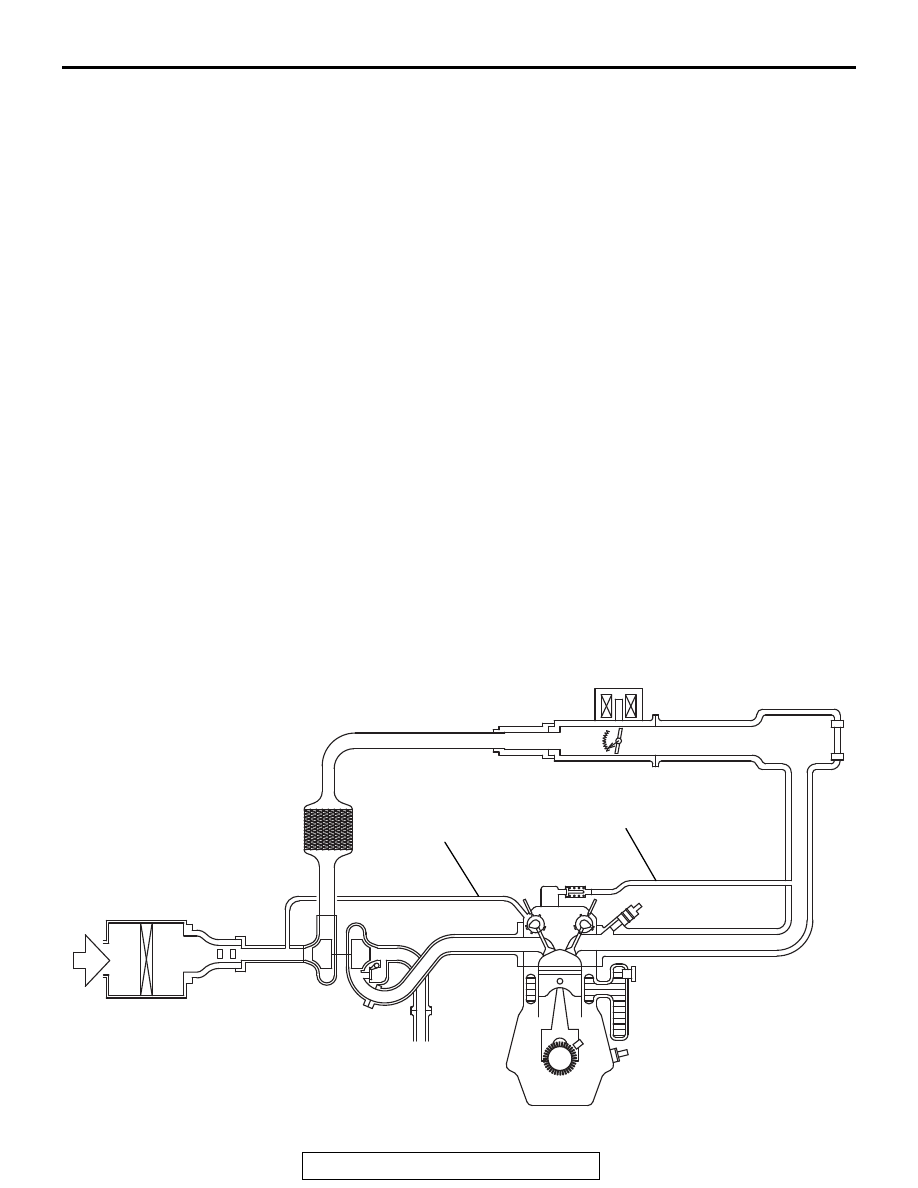Mitsubishi Lancer Evolution X. Manual - part 121

EMISSION CONTROL <MFI - T/C>
TSB Revision
ENGINE AND EMISSION CONTROL
17-71
VACUUM HOSE INSTALLATION
M1173007200486
1. When connecting the vacuum hoses, they should be
securely inserted onto the nipples.
2. Connect the hoses correctly, using the VACUUM HOSE
ROUTING diagram as a guide.
VACUUM HOSE CHECK
M1173007300762
1. Using the VACUUM HOSE ROUTING diagram as a guide,
check that the vacuum hoses are correctly connected.
2. Check the connection condition of the vacuum hoses which
can be removed, loosened, clogged possibly. And then
check whether there are no folded and damaged vacuum
hoses.
POSITIVE CRANKCASE VENTILATION SYSTEM
GENERAL INFORMATION (POSITIVE CRANKCASE VENTILATION SYSTEM)
M1173005001199
The positive crankcase ventilation (PCV) system pre-
vents the escape of blow-by gases from inside the
crankcase into the atmosphere.
Fresh air is sent from the air cleaner into the crank-
case through the breather hose to be mixed with the
blow-by gas inside the crankcase.
The blow-by gas inside the crankcase is drawn into
the intake manifold through the PCV valve.
The PCV valve is designed to lift the plunger accord-
ing to the intake manifold vacuum so as to regulate
the flow of blow-by gas properly.
In other words, the blow-by gas flow is regulated dur-
ing low load engine operation to maintain engine sta-
bility, while the flow is increased during high load
operation to improve the ventilation performance.
SYSTEM DIAGRAM
AK703398 AD
Air cleaner
Positive crankcase
ventilation valve
Ventilation hose
Breather hose